If you’re a redophile then I’ve got just the place for you. Head to the Pilbara region of in the north central part of Western Australia. Iron ore country. The landscape glows with deep reds and earthy ochres. Iron deposits layered over 2.5 billion years. The red ancient banded iron formations are among the oldest rocks on Earth.
The red of the Pilbara isn’t just pretty to look at. It’s pretty to cash in at the bank. The Pilbara is a global powerhouse in iron ore production. Pilbara mines export nearly a billion tonnes of iron ore each year. That’s about 40% of the global seaborne supply. It makes us folks in WA rather well off since it generates over AU$12 billion in royalties for the Western Australian government. We love red here … and we love the Chinese for buying it.
Joseph, Padma and I travelled to the Pilbara last week. We didn’t go to mine iron ore though. There are some places there that will never see a miner’s shovel. We travelled 1500 kilometres over two days to hike in one of Earth’s most spectacular and oldest settings – Karijini National Park. The park is distinguished by its banded iron formation formed a few billion years ago when iron and silica-rich sediments accumulated on an ancient sea floor. Millions of years of erosion have led to the creation of deep gorges.
And it was those gorges we wanted to explore. The gorges aren’t close to any fancy hotels so if you want to explore the park you need to bring your own accommodation. We’re not in the grey nomad, caravan-pulling crowd yet. We’re still tent sleepers. But we set up a cozy camp on the land of the Banyima, Yinhawangka and Kurrama Aboriginal traditional owners and used it as a base for day hikes.
June is perfect for Karijini. Daytime temps rose to about 25°C and nighttime to a chilly 5°C. It was hot enough in the day to make you feel warm enough to take a plunge in the icy pools but not hot enough to worry about dehydration. The rains stop in early April so by June you can be dry yet still assured of seeing some water in the gorges. Unfortunately for me and my camera, the great weather meant cloudless skies, which meant harsh shadows so for the most part I packed the camera away and recorded the experience on the emulsion of my memory. Best yet, there are only a few flies and other flying nasties in June.
We loved the red so much we brought back half of the Pilbara with us. The fine iron dust clings to everything and still after a few days we’re trying to remove the red from our camping gear, car and bottoms of our feet. Sweet reddish memories of a most enjoyable adventure.
Ngirribungunha (Dales Gorge)
We hiked along Gorge Rim, then descended into the gorge and walked along a creek to Fortescue Falls. We ended the hike with 600 metre return walk and swim in Fern Pool. Joseph swam to the the waterfall flowing into Fern Pool. I jumped in but only stayed for a minute or so since the water was numbingly cold.
Hancock Gorge, Kermits Pool
An ‘extreme’ 1.5 km return hike. We started with a steep descent via ladder to the gorge floor and then hiked downstream on ledges or through water to Kermits Pool. We hiked with reef walkers and shorts but still tried to avoid walking through the icy water. We left our backpacks and cameras at the final stretch as I was certain we would all fall into the creek (only one of us did) as we had to cling to the side of the gorge. So we have no photos of the final descent through a very narrow gorge to Kermits Pool, which is quite spectacular.
Handrail Pool
An ‘extreme’ 1.2 km return hike only for ‘very experienced and well-prepared hikers’. It was actually a pretty easy hike. The gorge was dry so we didn’t have to wade through a slippery creek bed. The pool is named after the final part of the trail … a vertical descent aided by a hand rail. Because there was no water flow Handrail Pool was stagnant and not suitable for swimming.

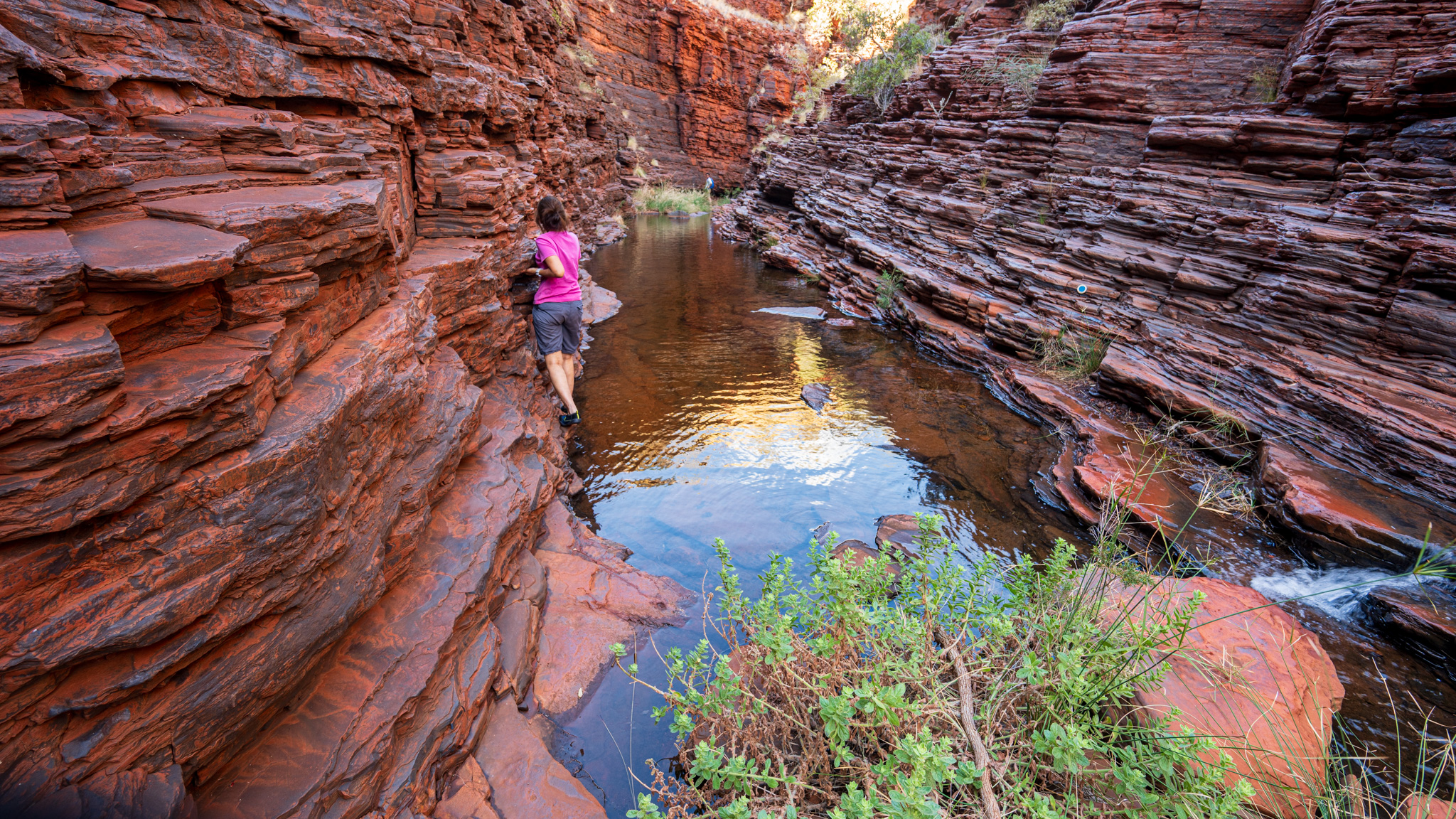
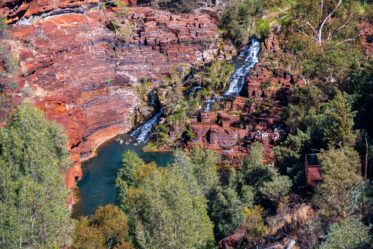

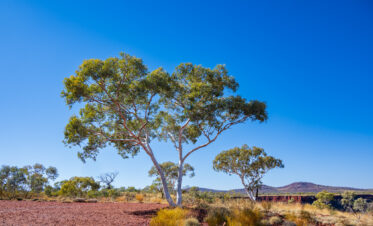
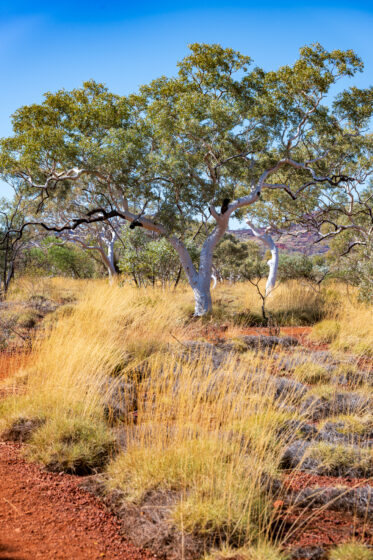
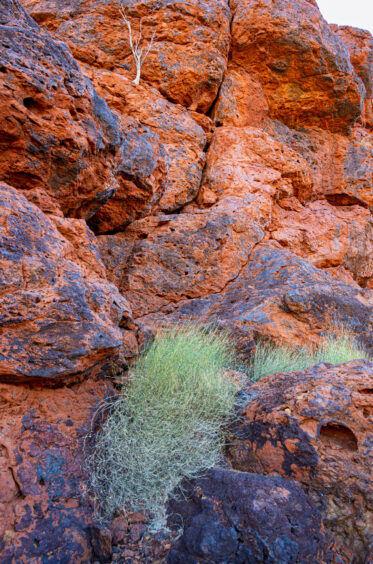
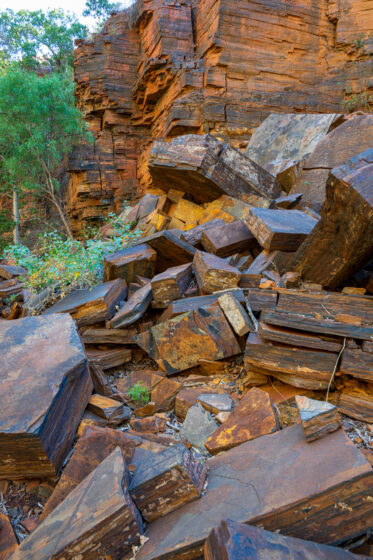
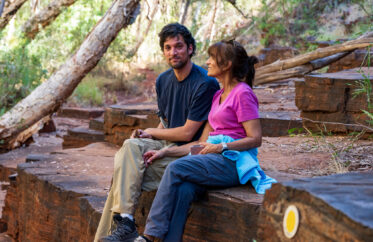
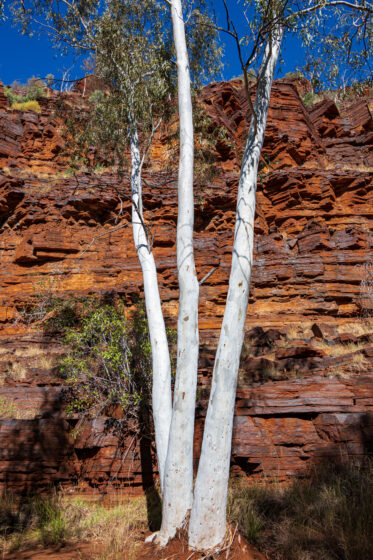
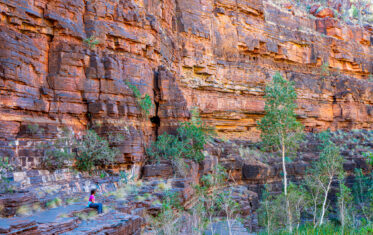

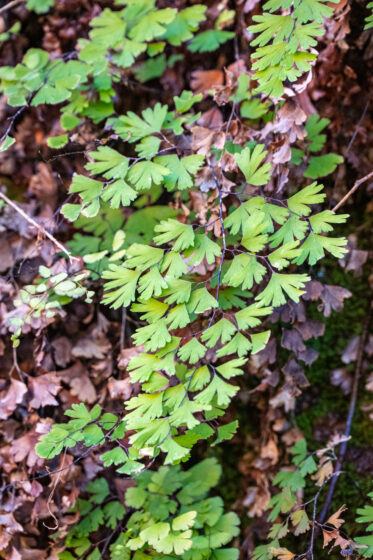
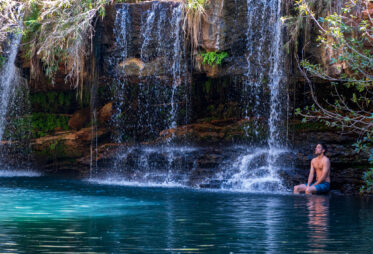


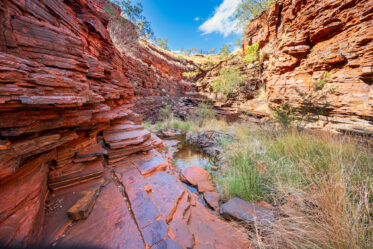
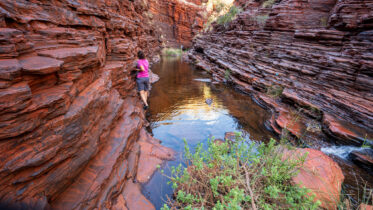
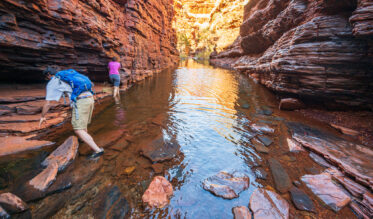
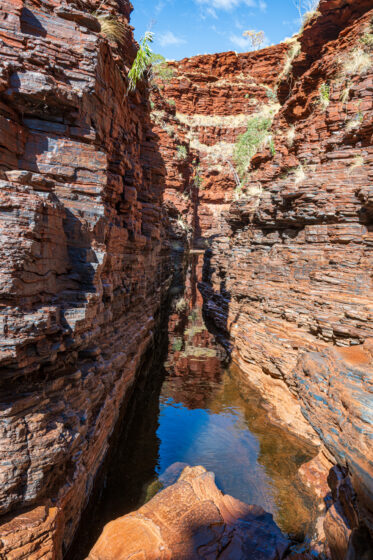


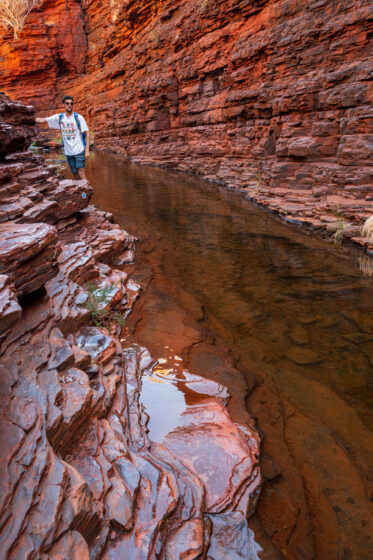
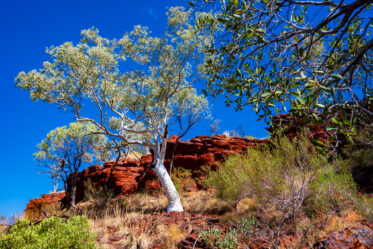
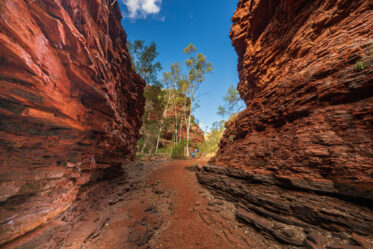


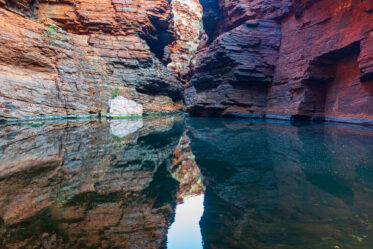
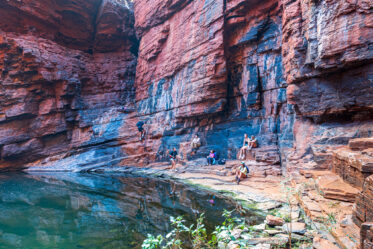
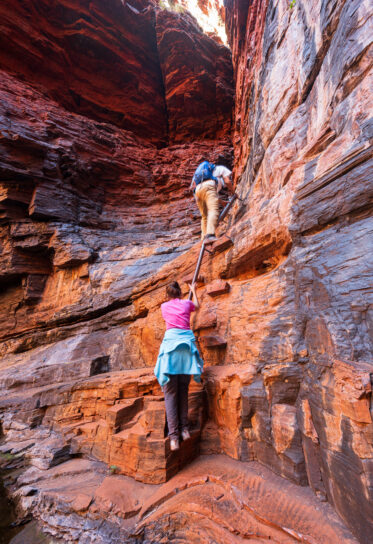
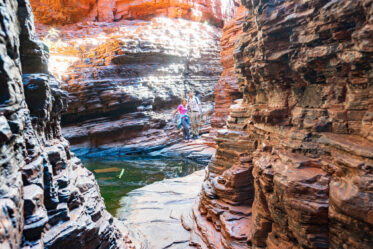

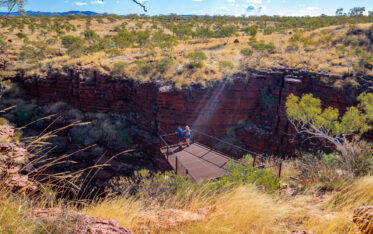
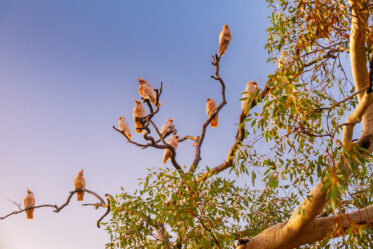
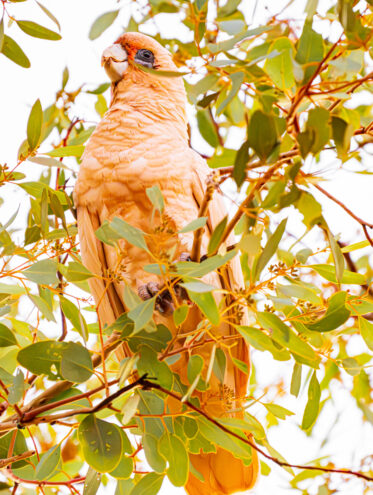
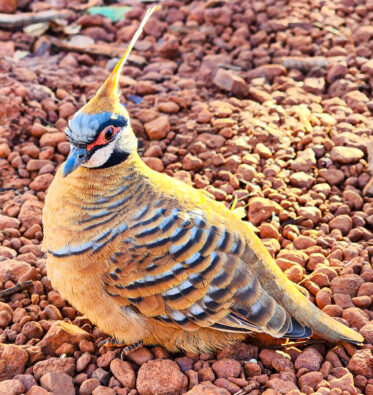
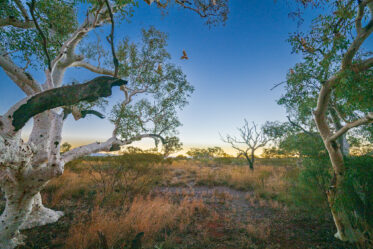


Excellently written Mr Major.